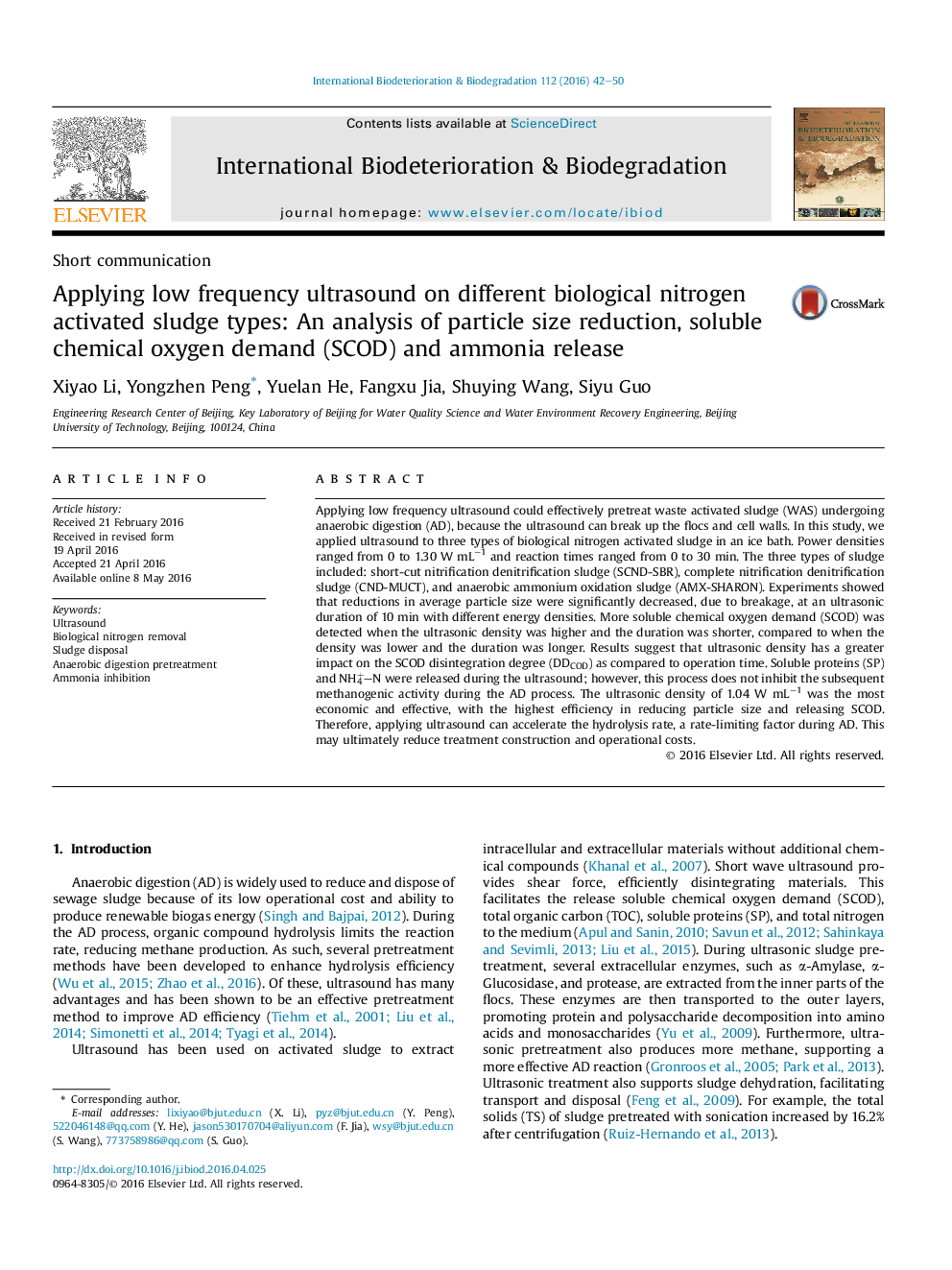| کد مقاله | کد نشریه | سال انتشار | مقاله انگلیسی | نسخه تمام متن |
|---|---|---|---|---|
| 4364223 | 1616305 | 2016 | 9 صفحه PDF | دانلود رایگان |

• Ultrasound was applied on three typical types of specific BNR activated sludge.
• Mean particle sizes after sufficient sonication were similar for different sludge.
• SCOD increased rapidly at the earlier time of sonic treatment.
• Ammonia release during the ultrasound treatment would not inhibit CH4 production.
• Ultrasonic density of 1.04 W mL−1 was economic and effective.
Applying low frequency ultrasound could effectively pretreat waste activated sludge (WAS) undergoing anaerobic digestion (AD), because the ultrasound can break up the flocs and cell walls. In this study, we applied ultrasound to three types of biological nitrogen activated sludge in an ice bath. Power densities ranged from 0 to 1.30 W mL−1 and reaction times ranged from 0 to 30 min. The three types of sludge included: short-cut nitrification denitrification sludge (SCND-SBR), complete nitrification denitrification sludge (CND-MUCT), and anaerobic ammonium oxidation sludge (AMX-SHARON). Experiments showed that reductions in average particle size were significantly decreased, due to breakage, at an ultrasonic duration of 10 min with different energy densities. More soluble chemical oxygen demand (SCOD) was detected when the ultrasonic density was higher and the duration was shorter, compared to when the density was lower and the duration was longer. Results suggest that ultrasonic density has a greater impact on the SCOD disintegration degree (DDCOD) as compared to operation time. Soluble proteins (SP) and NH4+N were released during the ultrasound; however, this process does not inhibit the subsequent methanogenic activity during the AD process. The ultrasonic density of 1.04 W mL−1 was the most economic and effective, with the highest efficiency in reducing particle size and releasing SCOD. Therefore, applying ultrasound can accelerate the hydrolysis rate, a rate-limiting factor during AD. This may ultimately reduce treatment construction and operational costs.
Figure optionsDownload as PowerPoint slide
Journal: International Biodeterioration & Biodegradation - Volume 112, August 2016, Pages 42–50